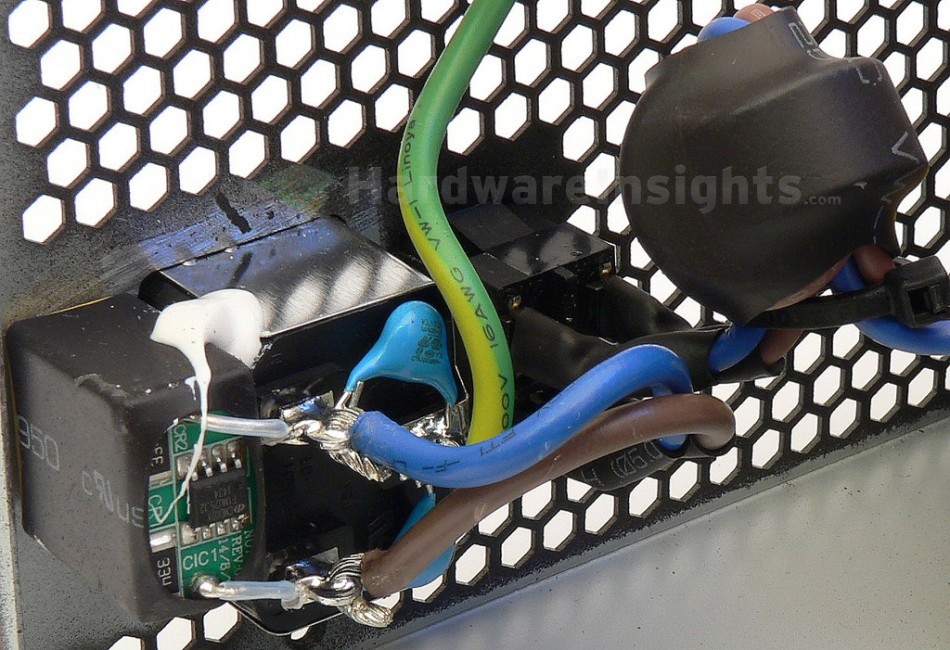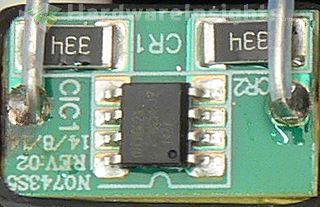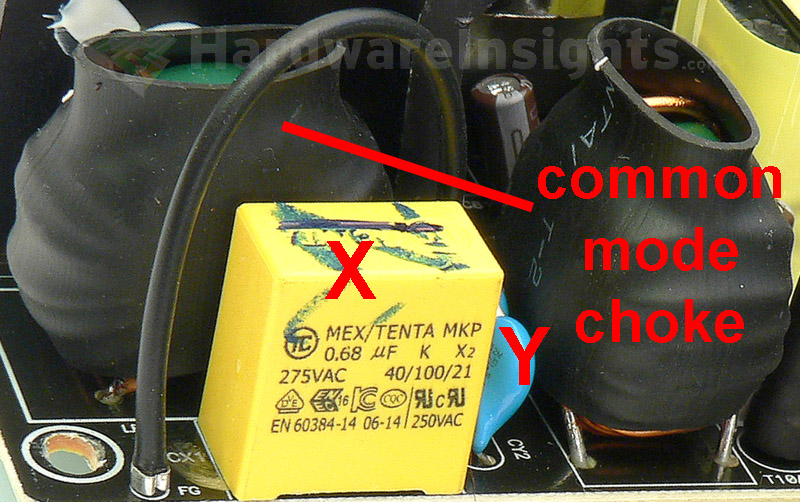Contents
- 1Introduction
- 1.1Packaging and accessories
- 2Connectors & cabling
- 2.1Case & fan
- 3Input filtering
- 4Primary side
- 4.1+5 V stand-by rail
- 5Secondary side
- 5.1Build quality
- 6Load testing
- 6.1Loading +5 V SB
- 6.2Voltage hold-up time
- 6.3Combined loading
- 6.4Combined loading ripple
- 6.5Crossloading, overloading
- 6.6Crossloading, overloading ripple
- 7Conclusion and evaluation
- 7.1Thanks
- 7.2Discussion
Input filtering
The first part of the input filtering inside the Supemo M1 Gold is much the same as in the Strider Gold S 550 W, and it starts directly on the AC inlet with two ceramic Y capacitors and one X film capacitor in a heatshrink sleeve. The receptacle is also partially shielded. The wires from the power switch to the main board go through a ferrite core for extra filtering.
The X capacitor is itself attached to a small daughterboard with a Champion Micro CMD02X IC which is used to discharge the film X caps only when the PSU is turned off (CM terms this technology “Magic Switch”). Mounting it here is a very clever way of saving space as it can also discharge capacitors on the main board when the fuse is intact and the switch is turned on (otherwise, the charge lingers, and can potentially deliver a shock via the inlet pins).
The second part of the filtering is on the main power board itself, consisting of two common-mode chokes, two extra Y capacitors and one X capacitor. There is also a (heatshrink-less) metal-oxide varistor (MOV) right next to the input bridge rectifier, which isn’t visible in this picture. Unfortunately however, once again, there is no thermistor present and therefore no inrush current limiting (beyond the circuit resistance)! Shame on Sirtec.
The X capacitors (between phase and neutral) and Y capacitors (between phase and ground/neutral and ground, and often also between one side of the high-voltage DC and ground) are used to filter out high-frequency ripple from the power grid (often from noisy electronics devices plugged into the mains which lack filtering due to cost cutting, but also from devices where filtering is very difficult to implement) and also to prevent ripple from being fed back into the grid. Chokes are used for the same reason, altogether they form an input filter. These components may also (partially) help to filter smaller voltage spikes in the power grid, and the MOV is used to suppress more serious spikes (for example, from a distant lightning strike). These days, more often, Y capacitors are used even between rectified ground (ground after an input rectifier) and earth ground to suppress internal interference and keep it from getting to the secondary side, because really high-frequency ripple goes everywhere it can to some extent (including through coupling to the insulation, metal casing etc.). That is also why the AC wires themselves are often inserted through the ferrite core.




